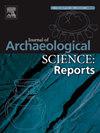桑巴基景观 "项目:简要报告
IF 1.5
2区 历史学
0 ARCHAEOLOGY
引用次数: 0
摘要
至少在公元前 1 万年到 1 000 年间,巴西海岸就被定居族群所占据,他们建造了不朽的贝冢(桑巴基),作为墓葬和祭祀场所。有关桑巴基建造者的一个最有趣的方面是他们管理景观的方式。考古植物学是一门研究过去植物与人类关系的学科,是这一争论的核心。然而,2018 年,一场大火袭击了里约热内卢联邦大学国家博物馆(Museu Nacional),该博物馆是引进和领导桑巴基考古植物学研究的机构,有可能导致这一讨论中断。在这场悲剧中,巴西最重要的考古植物学参考藏品之一被毁。在这项研究中,我们的目标是建立与桑巴基景观相关的考古植物学参考藏品,为恢复国家博物馆在该领域的调查能力做出贡献。到目前为止,我们已经收集了 39 份木质和木炭样本、47 份植金石样本、27 份果实和种子样本以及 22 份花粉样本,并收集了 72 件外来物种。本文章由计算机程序翻译,如有差异,请以英文原文为准。
The “Sambaqui landscapes” project: Brief report
Since at least 10.000 to 1.000 years BP, the Brazilian coast was occupied by sedentary communities that built monumental shellmounds interpreted as burial and ceremonial places, the sambaquis. One of the most intriguing aspects concerning sambaqui builders is the way they managed their landscape. Archaeobotany, the study of plant-people relationships in the past, is at the center of this debate. However, in 2018 a fire struck Museu Nacional (Federal University of Rio de Janeiro), the institution that introduced and leads archaeobotanical research on sambaquis, threatening to create a hiatus in this discussion. In the tragedy, one of the most important archaeobotanical reference collections in Brazil was destroyed. In this research, we aimed to build archaeobotanical reference collections related to sambaqui landscapes, contributing to the recovery of Museu Nacional’s investigative capability in the area. So far, 39 samples have been collected for the wood and charcoal collections, 47 for the phytolith collection, 27 for the fruit and seed collections and 22 for the pollen collection, accompanied by 72 exsiccatae.
求助全文
通过发布文献求助,成功后即可免费获取论文全文。
去求助
来源期刊

Journal of Archaeological Science-Reports
ARCHAEOLOGY-
CiteScore
3.10
自引率
12.50%
发文量
405
期刊介绍:
Journal of Archaeological Science: Reports is aimed at archaeologists and scientists engaged with the application of scientific techniques and methodologies to all areas of archaeology. The journal focuses on the results of the application of scientific methods to archaeological problems and debates. It will provide a forum for reviews and scientific debate of issues in scientific archaeology and their impact in the wider subject. Journal of Archaeological Science: Reports will publish papers of excellent archaeological science, with regional or wider interest. This will include case studies, reviews and short papers where an established scientific technique sheds light on archaeological questions and debates.
 求助内容:
求助内容: 应助结果提醒方式:
应助结果提醒方式:


